Safety
Cities
How making micromobility safer for women can achieve safer cities for everyone
May 5, 2022
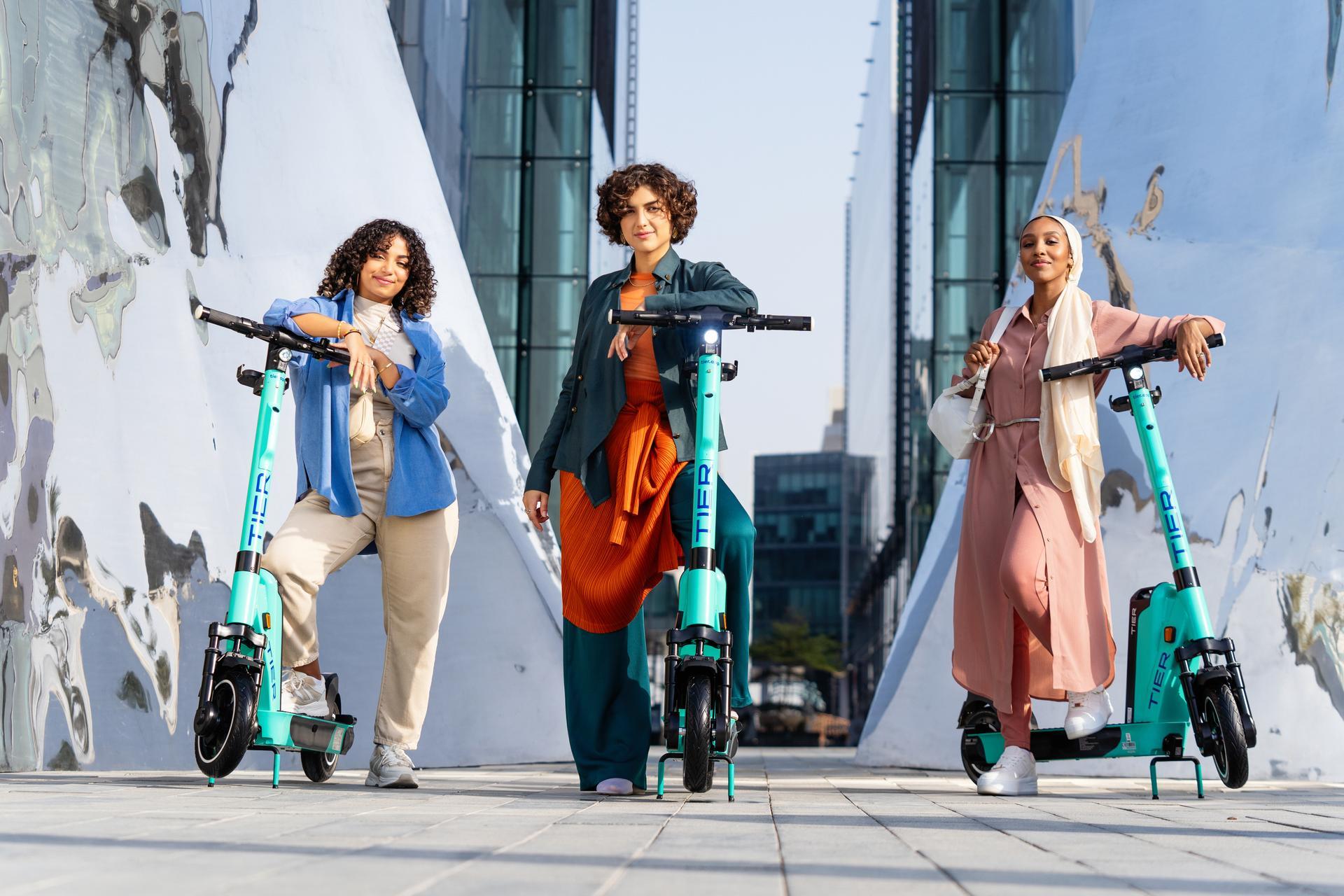
As International Women’s Day approaches, we found an opportunity to investigate the relationship between women and micro-mobility. We’ve partnered with Safe and the City to conduct a multi-regional study of 403 women in the UK and 411 women in Berlin. The results would help us understand the implications of engaging more women in micro-mobility. Safer options for the commute mean safer cities where car dependency is significantly reduced.
Urban mobility is not gender-neutral. Public and shared transport often fails to accommodate the diverse and complex mobility needs of women. Men in the UK continue to make twice as many cycle trips compared to women and we see this pattern emerging in new forms of micromobility too.
However, we believe micromobility has a unique opportunity to address the mobility gender imbalance by making mobility safer and more accessible to women. With efficient hardware and product development processes, micromobility operators can rapidly deploy gender-inclusive vehicle features and safety initiatives. Micromobility’s opportunity is even more pronounced when we consider the high demand for micromobility by women. Two-thirds of women in the UK would try an e-scooter if they were available.
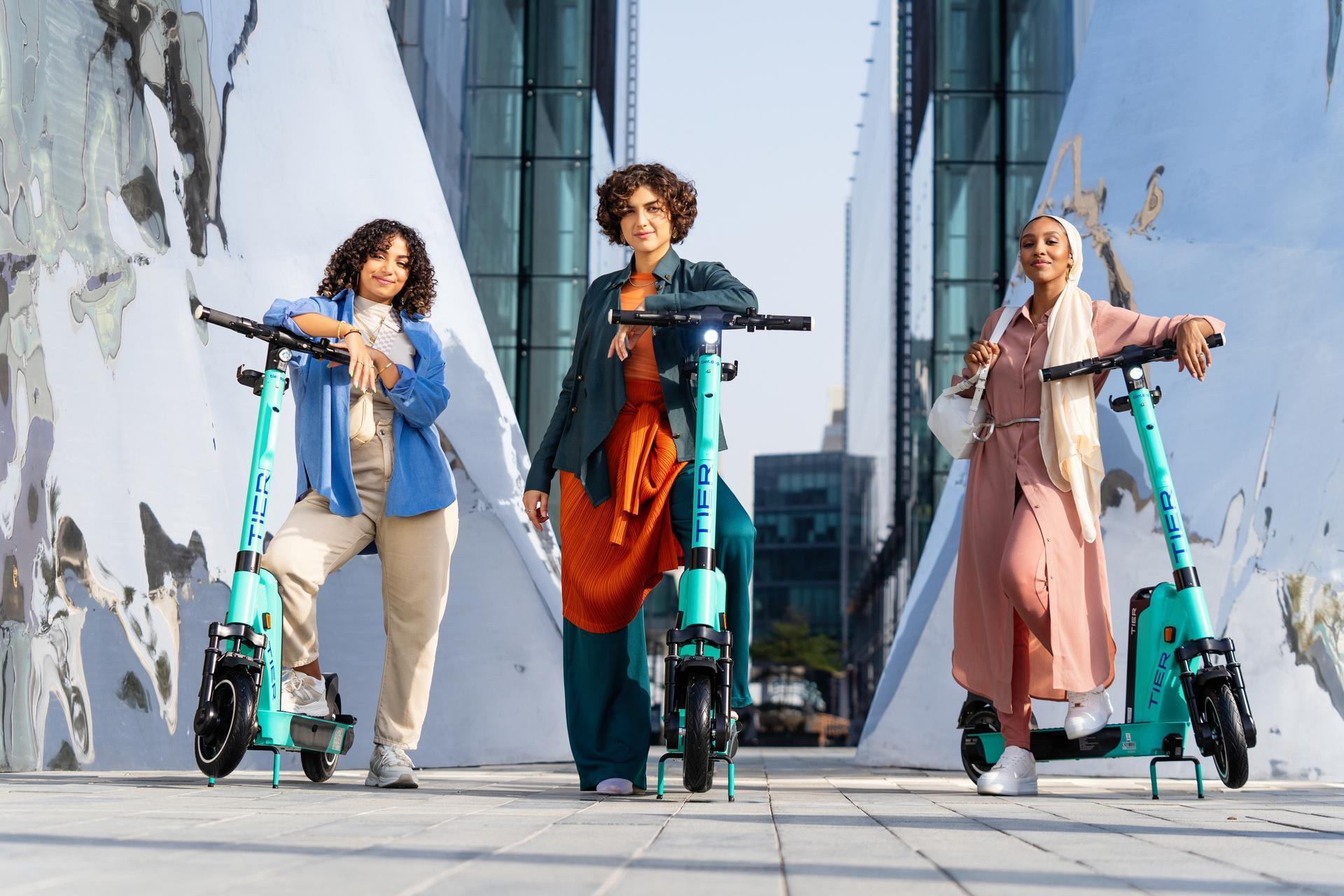
To unlock the benefits of micromobility for all, TIER is committed to understanding how micromobility innovation can respond to barriers which prevent women from moving freely in cities. As part of this vision, TIER has partnered with Safe & the City to conduct a multi-regional study of 403 women in the UK and 411 women in Berlin. This study reveals the barriers to micromobility use are dynamic, and vary considerably depending on the time of day, the stage of the ride, and the location, but also the maturity of the micromobility market. Many European cities are ahead of the UK and Ireland in adopting and investing in innovative micromobility solutions.
The insights from this study not only reveal the actions we can take to make micromobility more accessible, but also how achieving this may improve women’s access to all mobility. Our efforts to meet the needs of different groups, by implementing new mobility innovations and advocating for others to play their part in changing mobility for good, is ongoing.
Women are interested in micromobility options
A key takeaway from this study is that women are increasingly open to using e-scooters. The fact that nearly two-thirds of women in the UK would try an e-scooter if they were available is further evidence that women’s demand for micromobility options is growing.
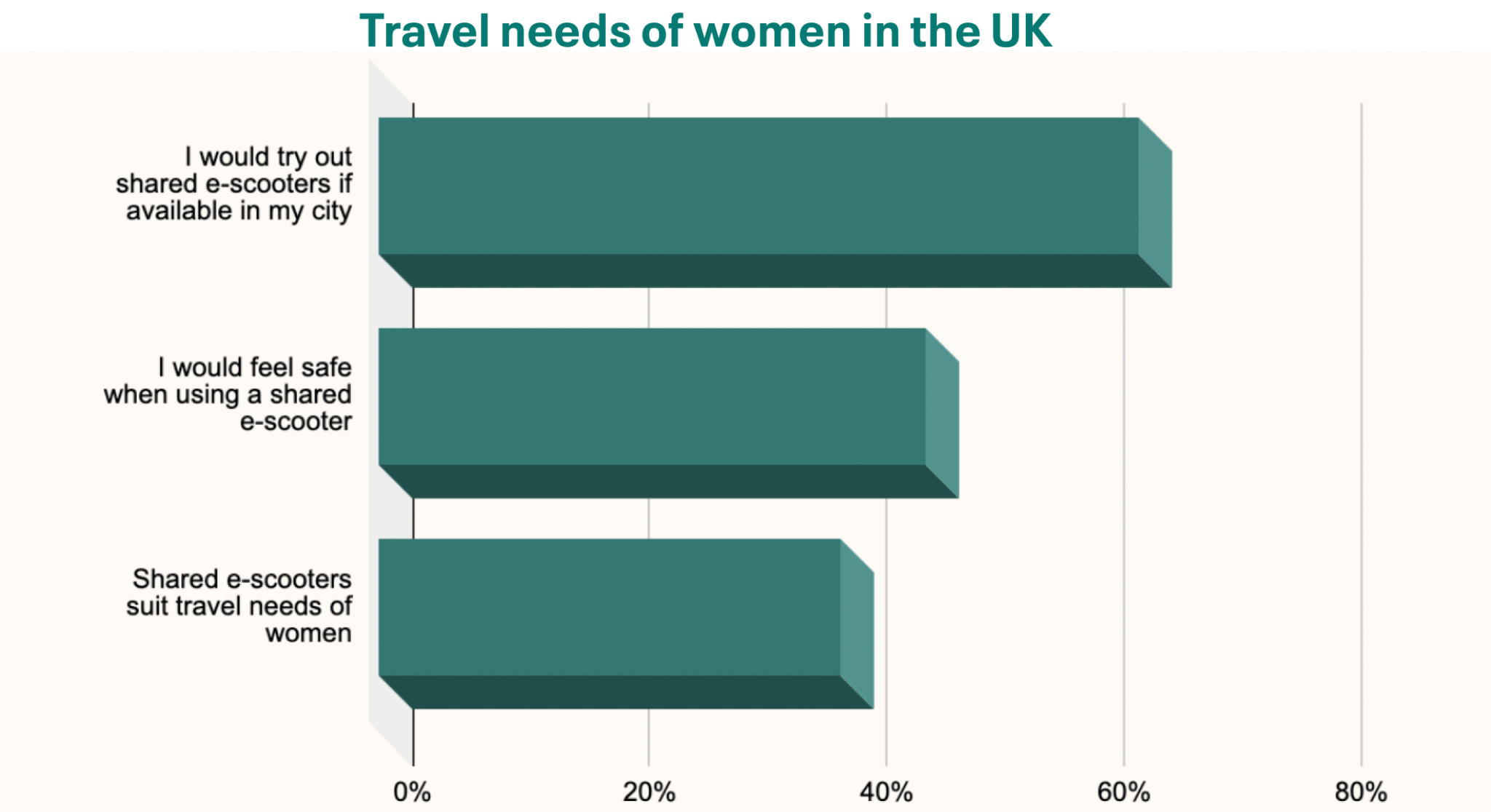
Berlin, a city with more mature micromobility solutions compared to UK cities, shows the potential for shifting away from car dependency. With almost one in every four women in Berlin using e-scooters a few times a week or more, the potential for micromobility choice to provide women greater mobility autonomy is clear.
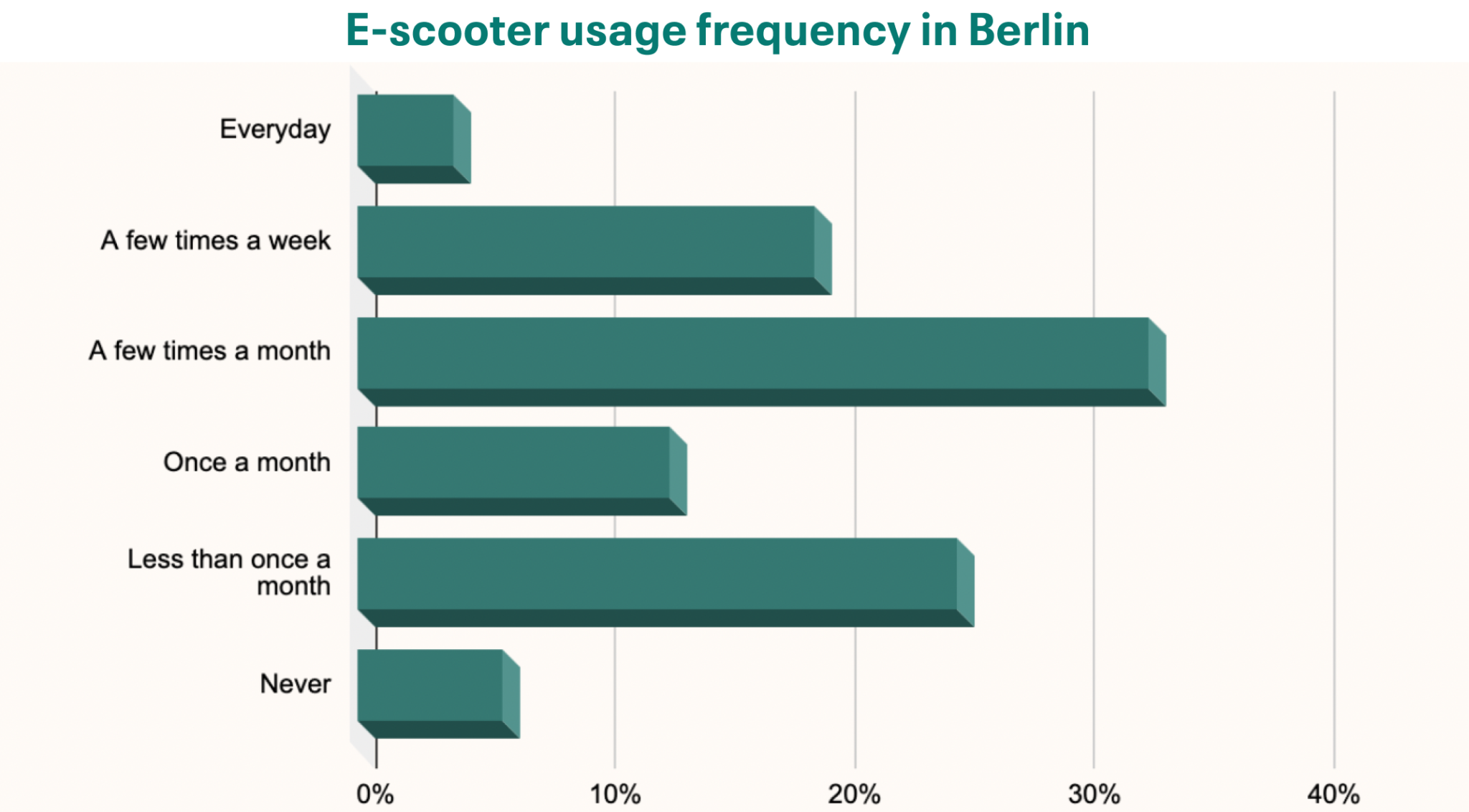
Barriers to micromobility adoption are dynamic
Major concerns and perceived barriers preventing women from trying micromobility options vary depending on the phase of the ride, the time of day, location, and the level of mobility adoption. Localised solutions are key to achieving safer cities.
Phase of ride
- Picking-up a scooter, and dropping it off
- 31% of women are concerned by a lack of lighting in parking areas. This was higher for women with disabilities.
- 25% of women are concerned by being stalked or followed.
- Riding an e-scooter
- The behaviour of other road users was top-ranked in both the UK (58%) and Berlin (47%) as the main concern when riding an e-scooter. Higher micromobilty adoption reduces this perceived safety risk.
- Over a third (35%) of women in Berlin were concerned about how the e-scooter felt on road infrastructure not designed for micromobility.
Time of day
While 73% of women in the UK would feel safe riding during the day, at night it drops to 3%. In Berlin, the stats are 66% and 10% respectively.
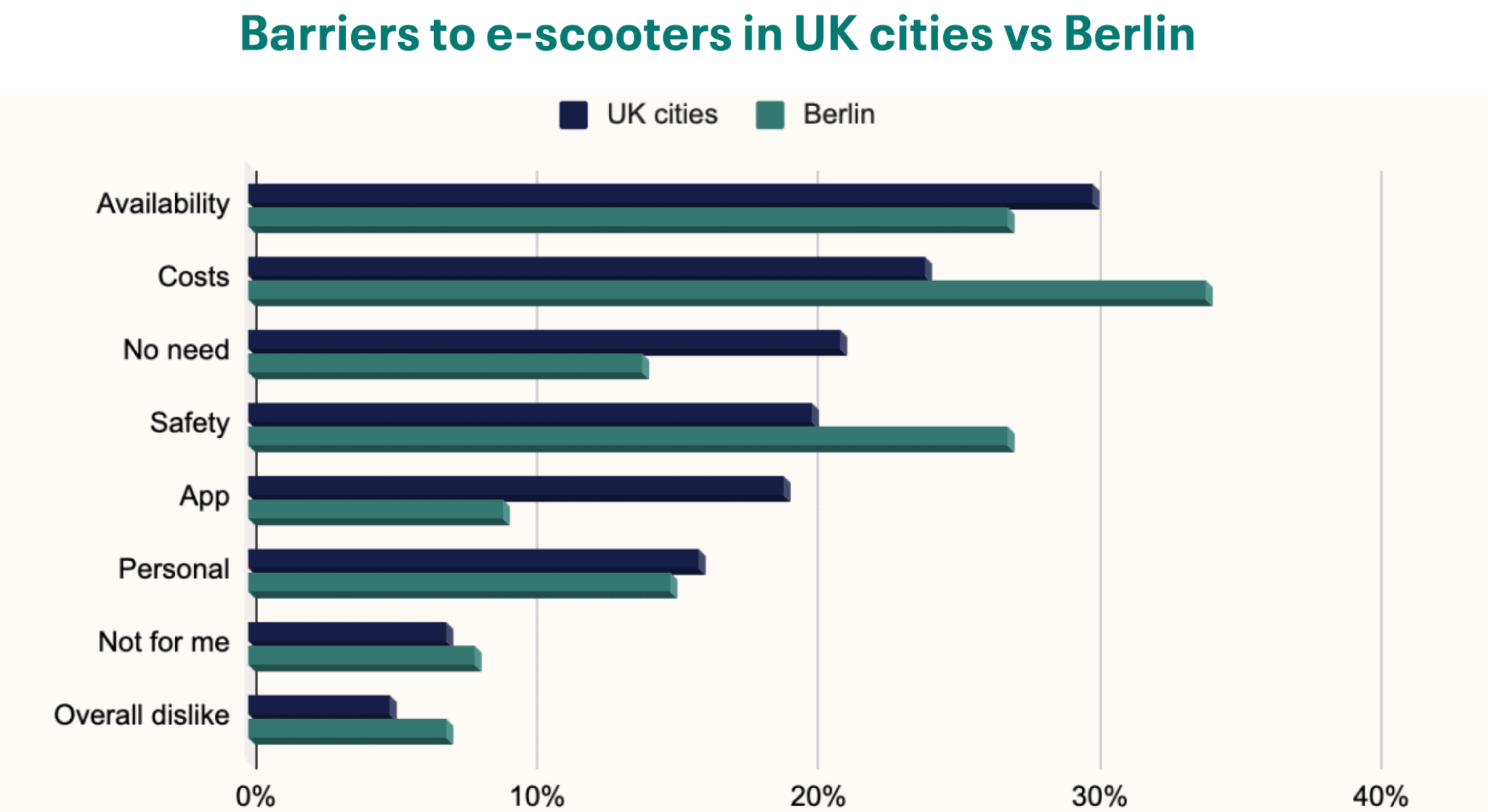
Cost is the greatest barrier to use in Berlin, while accessibility is the major barrier in UK cities. Comparably low prices of public transport in Germany may make micromobility relatively more expensive. Lower levels of micromobilty provision in UK cities likely influence this result too.
Designing transport with women in mind
This study provides insight into how micromobility is uniquely able to respond to a wider gender imbalance across urban mobility. The comparative speed of micromobility innovation means industry action to support micromobility choice by women can be swift provided the needs of women, and other underrepresented groups, are identified. TIER is committed to laying the groundwork for wider industry standards that make our cities safer for everyone to move in.
Addressing urban safety concerns at night
Women’s perceived safety risk of using micromobility significantly increases at night. By taking measures to make our cities safer at night, we improve accessibility, inclusion and urban productivity.
CCTV was key to making women feel safer in London when using a shared e-scooter at night (57%). Visibility to others was also highly valued (54%), as well as a well-lit route (51%).
Gender-inclusive vehicle design
Familiar safety interventions, product features and vehicle adaptions can make women feel more confident to use a micromobility option.
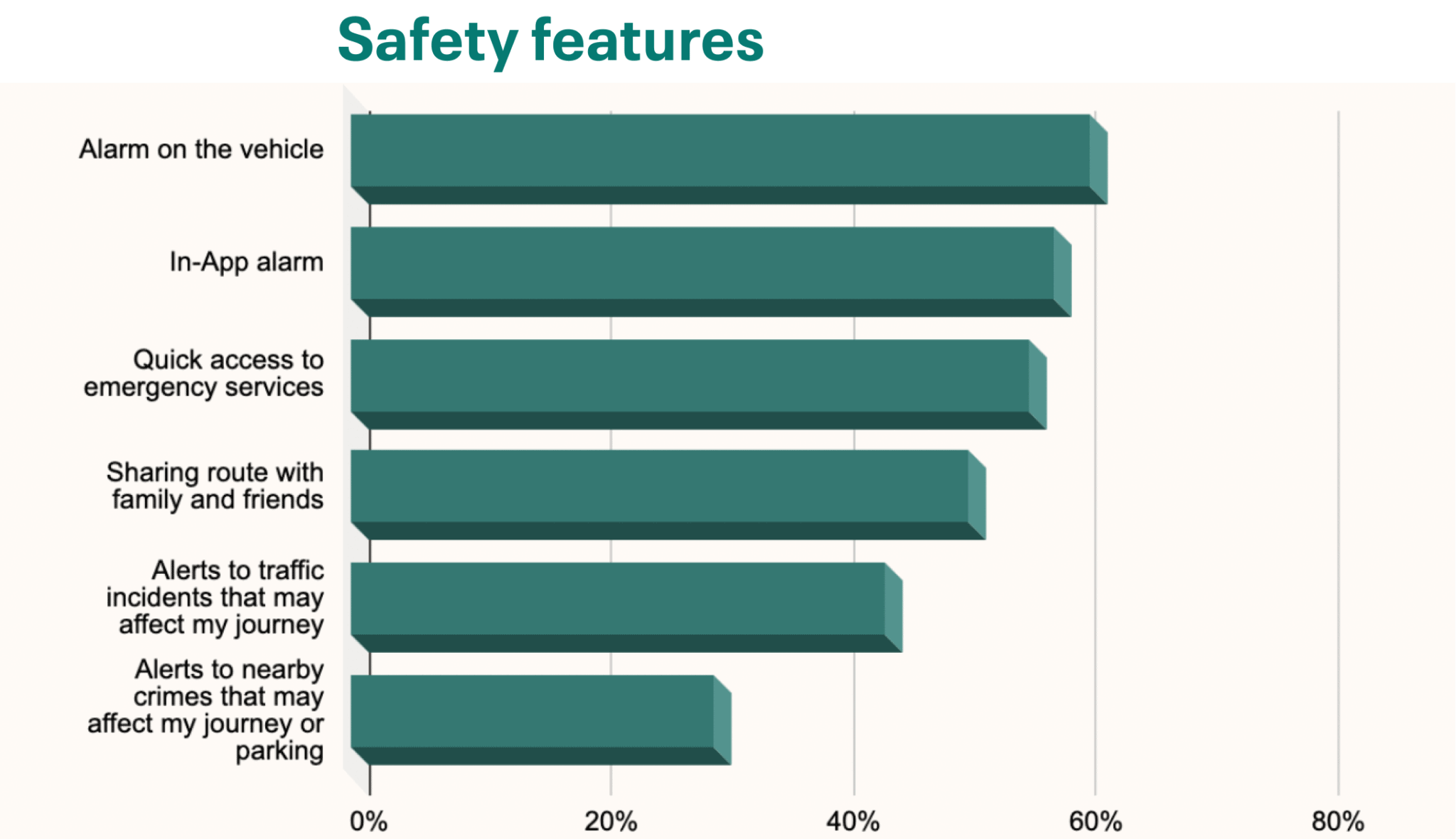
TIER uses research findings like these, as well as a range of other qualitative and quantitative data, to explore how we can design our services to accommodate the mobility needs of women.
Women focused safety training for first time riders
71% of women in the UK agreed training would improve how safe they felt.
All journeys matter, but the first one may matter more. This study shows women who had positive experiences when first trying e-scooters were more likely to continue using them. TIER’s Group Ride Feature creates further opportunities for experienced riders to support other women in their first rides.